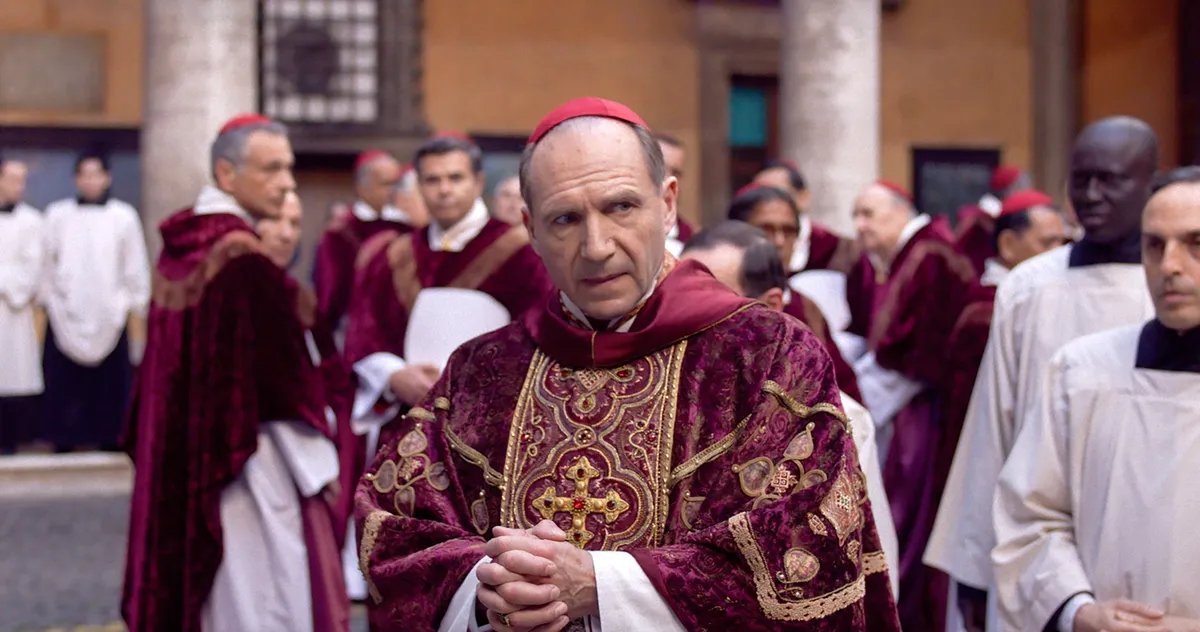
With gerrymandering and a lack of competitive contests in most congressional districts, the US electoral system may seem like the archaic monarchical proccess that the papal election depicted in Edward Berger’s “Conclave” is. This fictional gathering of cardinals to elect a new absolute, infallible leader of the globe of 1.4 billion Catholics may seem far removed from the US political landscape. Still, it has more in common and much more to say than meets the eye. We see the familiar characters, a disconnected, somewhat aloof left-wing with little substance to offer, coming to heads with an angry and embittered Eurocentic right. The ending of the film film serves as a critique of our secular politics and society, expressing a desire for new and unforeseen options.
In “Conclave”, Ralph Fiennes gives one of his strongest performances to date as Cardinal Thomas Lawrence, a complicated figure torn between his duty to impartially run the conclave and his loyalty to the liberal, tolerant faction led by the calculated Cardinal Aldo Bellini (Stanley Tucci.) Italian actor Sergio Castellitto plays the casually racist Cardinal Goffredo Tedesco, channeling Burlosconi (if not Mussolini), who wants to make the Catholic church great again. As Cardinal Joseph Tremblay, John Lithgow is after power, and who knows what else while around the outskirts hovers Sister Agnes (Isabella Rossellini.)
Many earthly faults appear at the conclave, including corruption, greed, and adultery, and are revealed in an exciting sequence to keep guessing how Cardinal Lawrence will steer the choice of Pope away from some very impressive options. The sequestered Cardinals also become increasingly aware of growing discontent outside their walls that threatens to make itself heard inside.
The visual storytelling and editing choices are superb. Berger uses the comparatively small cardinals in the ancient and huge Vatican buildings to convey the immensity and solemnity of their task. The Vatican, per usual, did not allow filming, but other locations in Rome and Cinecittà Studios’s faithful reconstruction of the Sistine Chapel are flawless. The Catholic church has never been disappointed in cinematic customing inspiration, and the Cardinals here are dressed in every type of clerical red to represent their tastes and flashiness or lack thereof. The arrogant Tedesco (Sergio Castellitto) flings his cape in one scene with a flamboyance not seen on screen since perhaps Fulton Sheen in the 1950s.
Like many of us, Cardinal Lawrence muddles through trying to hold the damned thing together. He has a crisis of faith, and his fellow liberal Cardinals seem to have not much to offer to the corruption and reactionaryism fueled by the social upheavals happening outside their golden walls. At the zenith of reluctant acceptance, an unexpected alternative to the norm presents itself in a twist that may be divisive and, indeed, has been controversial in some more conservative and traditionalist circles.
“Conclave” is a must-see for those interested in the sausage-making of politics, and it might just inspire us to try something new from the menu.
